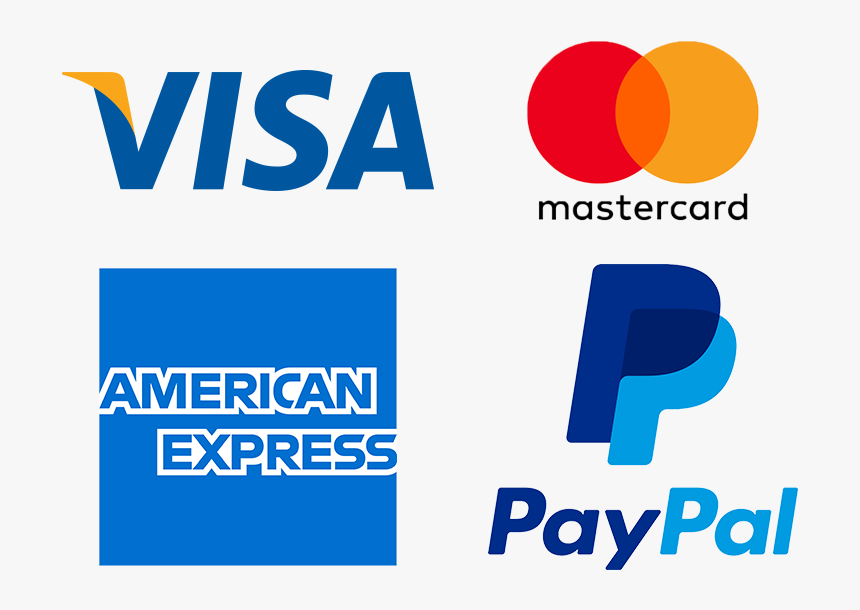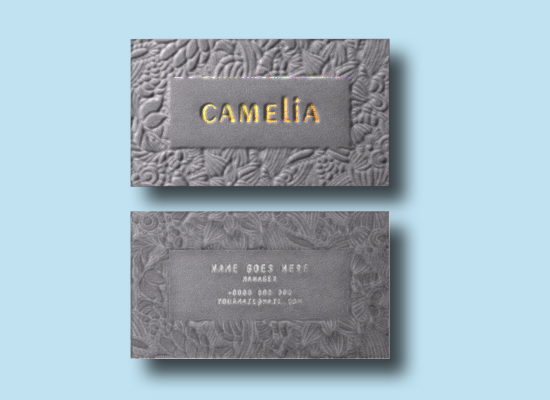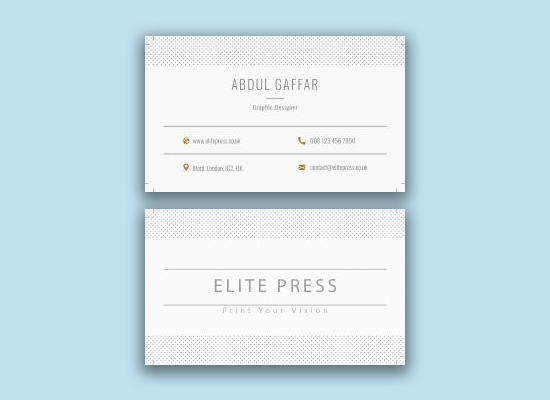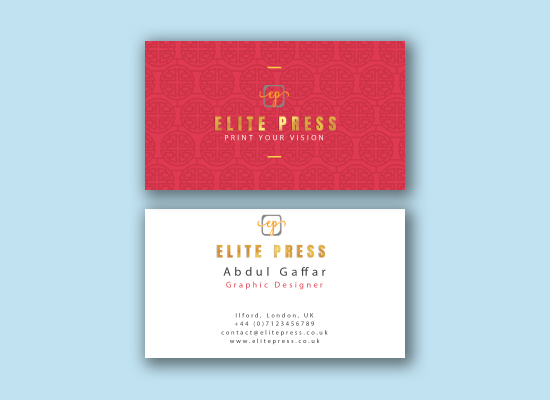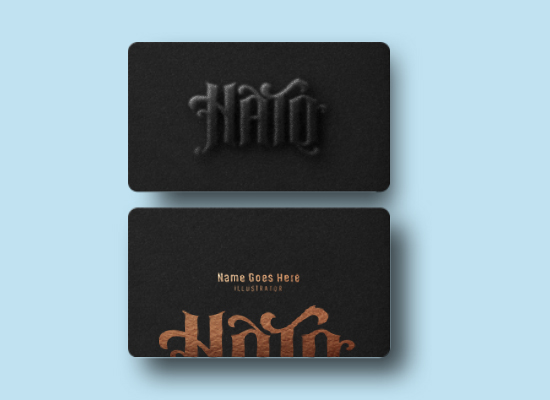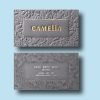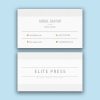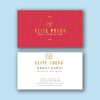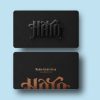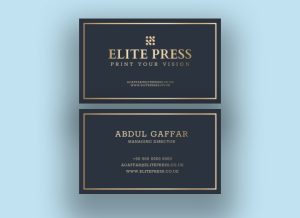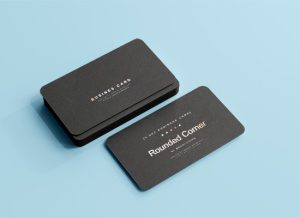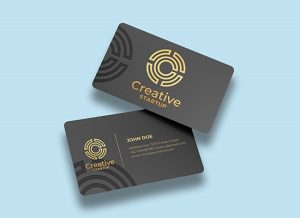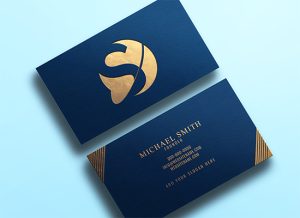Textured Business Cards
Please select artwork files:

Related Products
Additional Information
Elevate your message with Textured Business Cards. Unique and stylish, they add a premium touch to invitations, business cards, or personal notes
Specification
Finished Size:
Standard 85mm x 55mm
Square 55mm x 55mm
Slim 85mm x 40mm
Mini 85mm x 25mm
Printed Sides: Single or Double Sided
Artwork Requirements
Bleed 3mm All Round
Resolution 300 dpi minimum
Format PDF
Colour CMYK
Fonts Outlined or Embedded
Introduction to Textured Business Cards
Textured business cards add a tactile dimension to traditional business card design, making them a distinctive and memorable way to introduce yourself or your brand. While standard business cards rely solely on visual design elements—such as colors, fonts, and logos—textured cards enhance the sensory experience by incorporating physical patterns, raised surfaces, or unique materials. These cards offer a premium feel that can leave a lasting impression on recipients, making them ideal for professionals who want to stand out in a competitive market.
In a world where digital communication is dominant, the tactile nature of textured business cards helps create a personal connection. Whether it’s through embossing, letterpress, or special coatings, textured business cards go beyond the norm, offering an elevated experience that reinforces a brand’s image of quality, creativity, and attention to detail.
Why Choose Textured Business Cards?
Textured business cards are more than just a piece of paper with your contact details; they represent your brand’s identity and communicate subtle messages about your professionalism and uniqueness. Here are some reasons why textured business cards are increasingly popular:
- Memorability: In a sea of ordinary business cards, those with a textured finish immediately stand out. The unique feel of the card in someone’s hand creates a stronger sensory connection, which can make your card—and by extension, your brand—more memorable.
- Premium Look and Feel: Textured cards often convey a sense of luxury and attention to detail. Whether you’re a high-end retailer, a creative professional, or someone in a client-facing role, textured business cards communicate that you value quality and put thought into every aspect of your presentation.
- Enhanced Branding: The tactile element of a textured card can complement your visual branding. For example, a business with an eco-friendly focus might choose a textured card made from recycled paper with a rough, earthy texture. A high-end fashion brand might opt for smooth, velvet-like cards to match their brand’s sleek and sophisticated image.
- Tactile Engagement: People are more likely to remember and appreciate something that engages more than one sense. By adding texture, your business card not only appeals to the eye but also to touch, creating a stronger connection with the recipient. This multi-sensory engagement makes it more likely that your card will be kept rather than discarded.
- Durability: Textured business cards are often made from thicker, more durable materials than standard cards. This added strength ensures that they withstand wear and tear better, keeping your brand’s image intact even after the card has been handled multiple times.
Types of Textured Business Cards
Textured business cards come in a wide variety of styles, each offering its own distinct feel and visual appeal. The type of texture you choose should align with your brand’s image and the message you want to convey. Here are some popular types of textured business cards:
- Embossed Business Cards: Embossing involves creating raised surfaces on certain parts of the card, such as your logo, name, or key design elements. This technique adds depth and dimension to the card, making specific areas stand out. The raised effect is both visually appealing and pleasing to the touch, giving the card a high-end, professional appearance.
- Debossed Business Cards: Similar to embossing, debossing creates an indented effect on the card rather than a raised one. This method presses certain design elements into the card’s surface, offering a subtle and understated texture. Debossed cards are often chosen for their elegant, minimalist feel, and can be used to create a more refined aesthetic.
- Letterpress Business Cards: Letterpress is a traditional printing technique where ink is applied to recessed areas of the card, creating a textured print that is slightly pressed into the card’s surface. The resulting design has both visual depth and a tactile quality. Letterpress business cards often have a vintage or artisanal feel, making them popular among creative professionals, designers, and boutique businesses.
- Foil-Stamped Business Cards: Foil stamping adds a metallic finish to certain parts of your card, such as your name or logo, giving it a shiny, reflective texture. This technique can be combined with embossing or debossing to create a luxurious and eye-catching effect. Foil-stamped business cards are ideal for those who want to convey elegance, professionalism, and high quality.
- Spot UV-Coated Business Cards: Spot UV coating is a method where a glossy, raised coating is applied to specific areas of the card, such as text or logos. The contrast between the glossy, raised areas and the matte background creates a striking visual effect and a distinct texture. Spot UV is popular for creating contrast and highlighting key parts of your design.
- Linen Textured Business Cards: Linen cards have a subtle woven texture that mimics the look and feel of fabric. This texture is both elegant and understated, adding a level of sophistication without overpowering the design. Linen-textured business cards are ideal for professionals in industries such as finance, law, or consulting, where a traditional and refined look is preferred.
- Cotton Paper Business Cards: Made from 100% cotton or a blend of cotton fibers, these cards have a soft, luxurious texture that feels different from standard cardstock. Cotton paper is eco-friendly and biodegradable, making it a great option for businesses focused on sustainability. The soft feel of cotton business cards gives them a premium, high-end quality that is perfect for upscale brands or creative professionals.
- Velvet-Laminated Business Cards: Velvet lamination adds a soft, velvety texture to the surface of the card, creating a smooth and luxurious finish. This type of card is perfect for those looking to create a sleek, modern, and high-end feel. Velvet-laminated cards are often chosen by luxury brands, fashion designers, and anyone who wants to make a statement with a unique tactile experience.
- Satin Finish Business Cards: Satin finish cards offer a smooth texture that is somewhere between glossy and matte. They have a soft, slightly reflective surface that adds a touch of elegance without being too flashy. Satin finishes are often used for businesses looking for a professional yet understated card.
Customization Options
In addition to selecting a texture, you have numerous ways to customize your business card to align with your brand identity and make it unique. Customization options for textured business cards include:
- Color Schemes: Choose from a variety of color options that align with your brand. Whether you prefer vibrant colors, monochromatic schemes, or classic black-and-white designs, color selection is key to making your card visually appealing.
- Thickness and Weight: Textured business cards typically come in thicker stocks, which not only adds to their durability but also contributes to their premium feel. A heavier card feels more substantial in the hand, reinforcing the perception of quality and professionalism.
- Shapes and Sizes: While the standard business card size is 3.5 x 2 inches, you can opt for custom shapes and sizes to further differentiate yourself. Square cards, rounded corners, or even die-cut shapes can add a unique twist to the tactile experience of your card.
- Specialty Inks: Beyond standard printing, specialty inks—such as metallic or thermochromatic (color-changing) inks—can add an extra level of interest to your card. These inks work especially well in combination with textures, creating both visual and tactile contrast.
- Eco-Friendly Options: Many businesses are turning to eco-friendly materials, such as recycled paper, cotton, or bamboo, for their textured business cards. These materials not only reduce environmental impact but also provide a unique texture that reinforces the brand’s commitment to sustainability.
When to Use Textured Business Cards
Textured business cards are versatile and can be used in various professional settings. Here are some scenarios where they are particularly effective:
- Creative Industries: Artists, designers, photographers, and other creative professionals often opt for textured business cards to showcase their attention to detail and creativity. These cards serve as a reflection of their artistic talents and help to establish a strong first impression.
- Luxury and High-End Brands: Businesses in luxury markets—such as high-end retailers, jewelry designers, or premium service providers—can benefit from the upscale look and feel of textured business cards. The texture reinforces the idea of exclusivity and high quality.
- Networking Events: At crowded networking events or trade shows, it can be difficult to stand out. Textured business cards can help you make a memorable impression and give potential clients or partners a physical reminder of your interaction.
- Professional Services: Lawyers, consultants, real estate agents, and financial advisors often prefer textured business cards to convey a sense of trustworthiness, reliability, and professionalism. A high-quality, textured card can set the tone for a business relationship built on credibility and expertise.
Conclusion
Textured business cards provide a unique and memorable way to represent your brand. By adding a tactile dimension to traditional business cards, they not only capture attention but also create a lasting impression. From embossed and letterpress designs to velvet laminations and eco-friendly textures, the options are nearly endless, allowing you to create a card that truly reflects your brand’s personality and values. Whether you’re looking to convey luxury, creativity, or professionalism, textured business cards offer a premium solution for making connections that last.
Get Your Quote
My Account
About Us
Our Products
Contact
Follow Us On
We Accept
